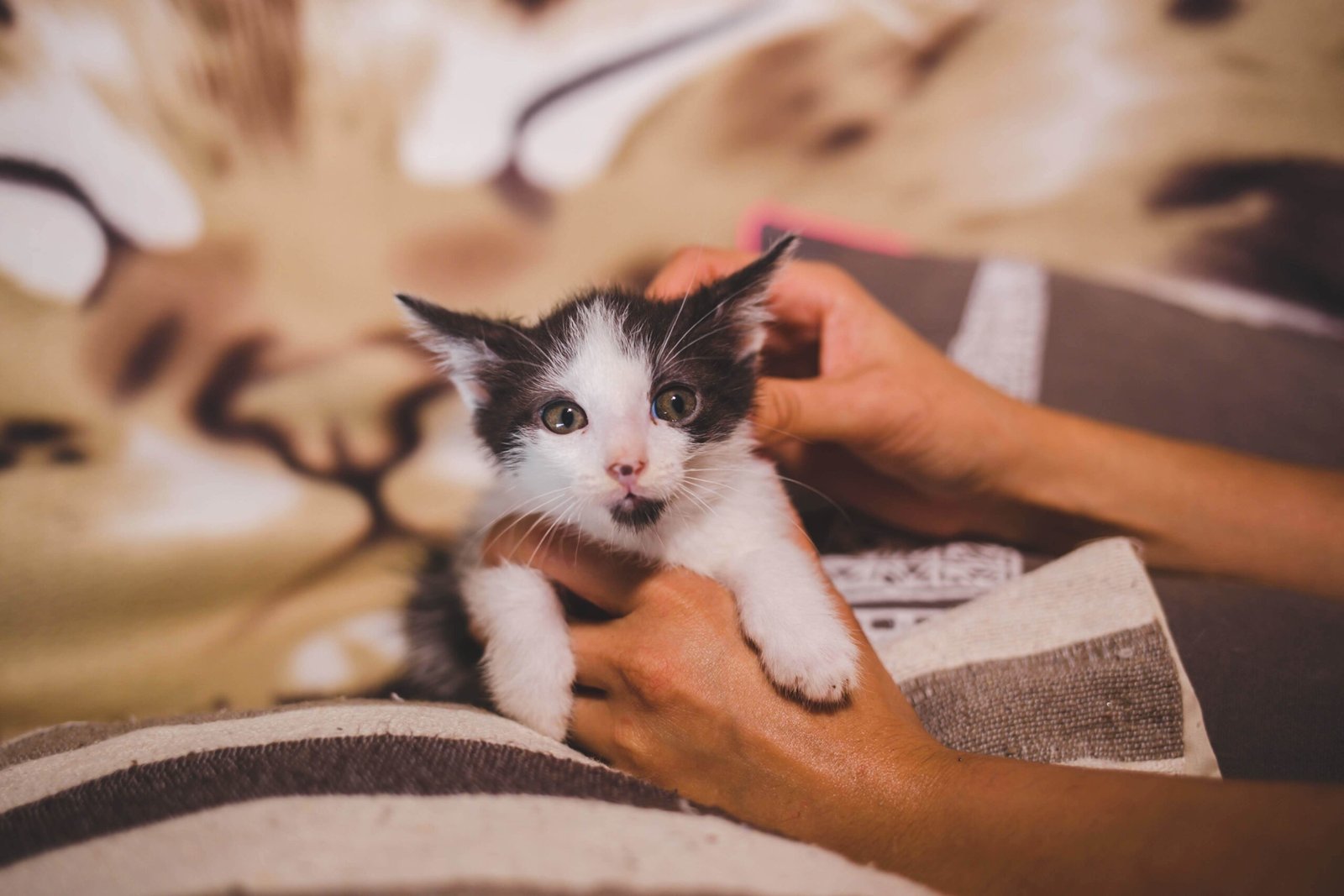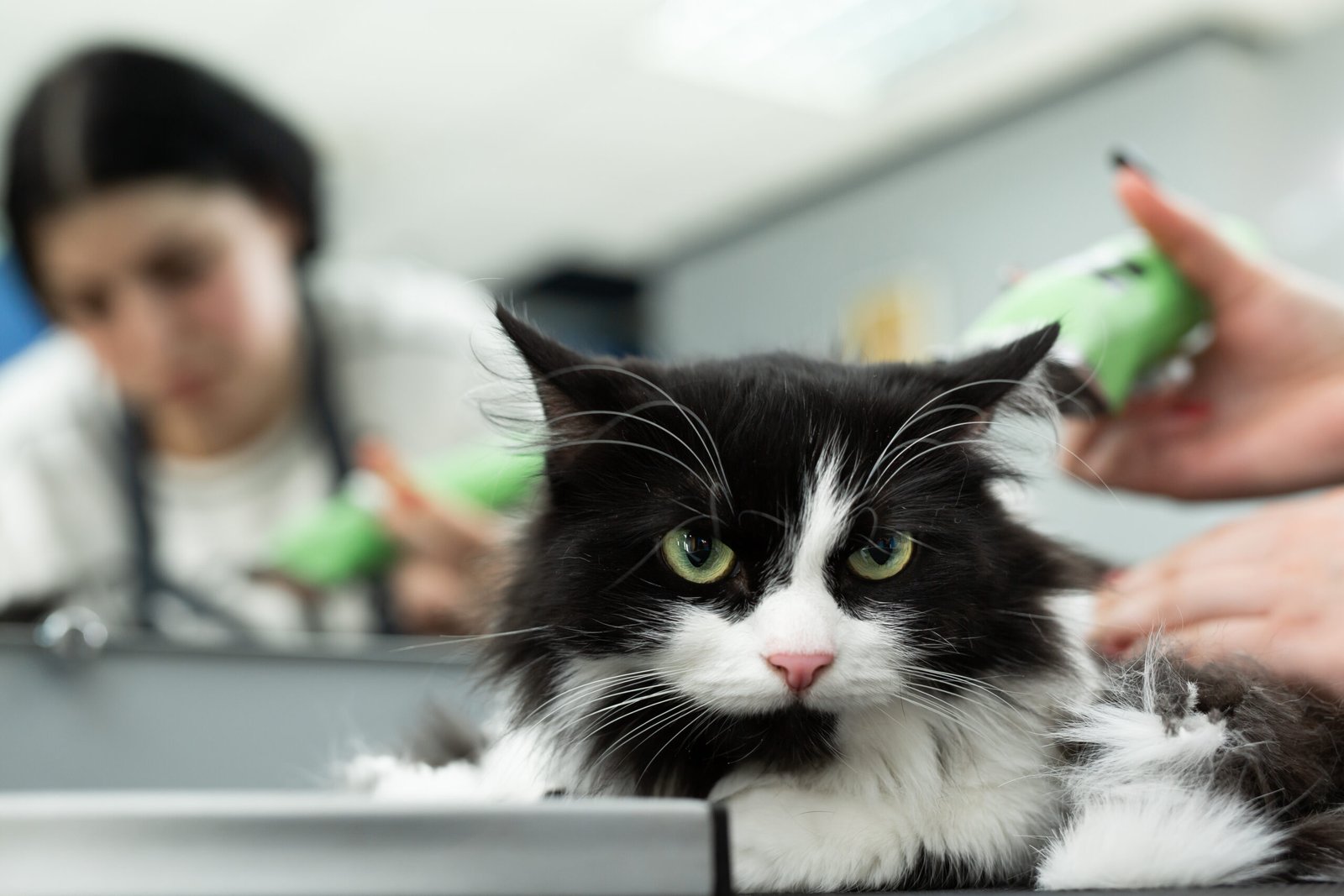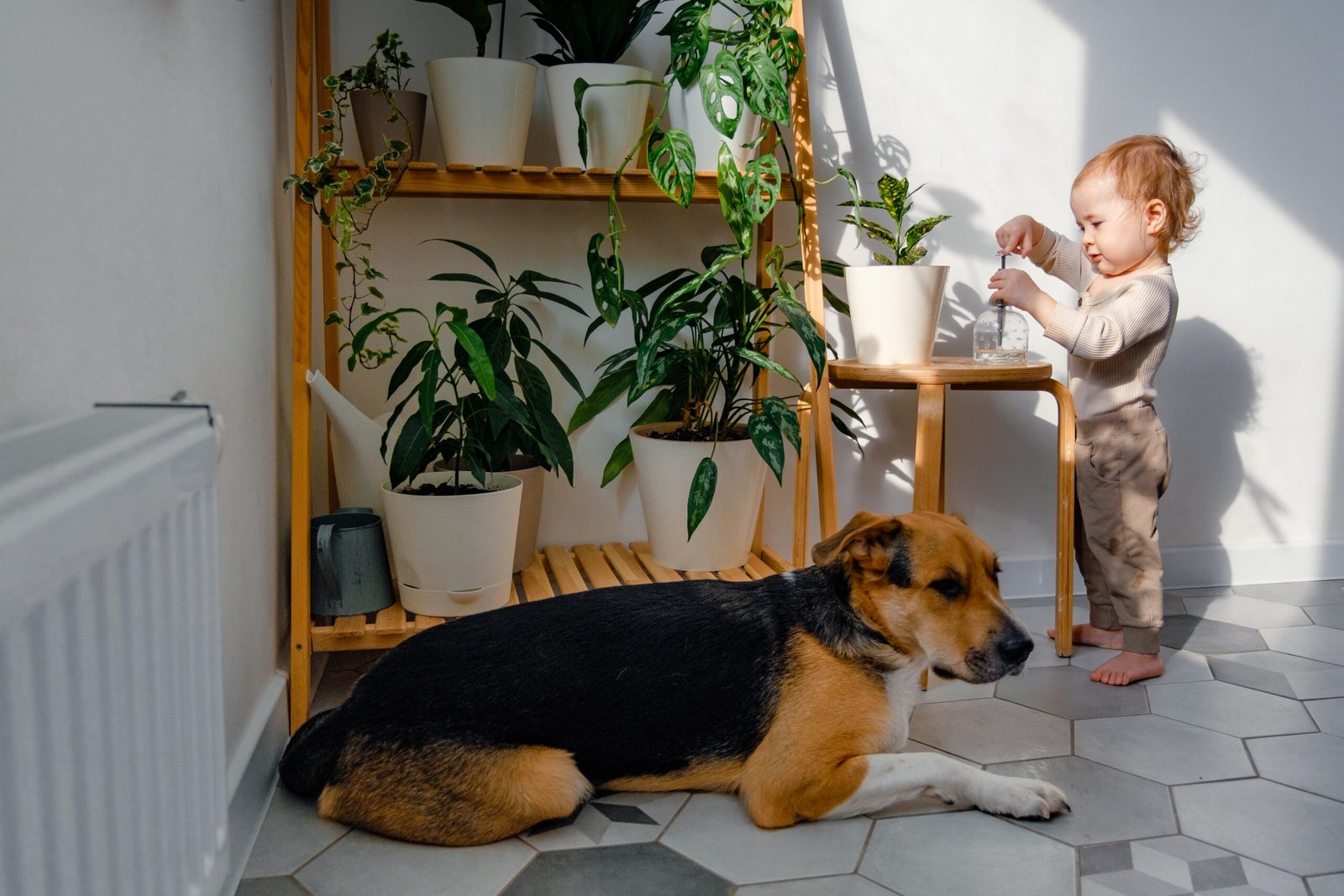Welcoming a new kitten into your home is a joyful event filled with cuddles and playful antics. However, one of the first challenges you’ll face is figuring out how to litter train your new kitten effectively. Training your kitten to use a litter box is essential for a clean home and a happy pet. In this guide, we’ll explore tried and tested methods to make litter training a seamless process. By following these tips, you can establish good habits in your kitten, ensuring a harmonious environment for both of you.
How to Litter Train Your New Kitten with a Litter Box
Training your kitten to use a litter box requires patience and consistency. Start by selecting an appropriate litter box size that suits your kitten’s growing needs, and place it in a quiet, accessible area to help them feel secure. Introduce your kitten to the box by gently placing them inside after meals and naps; this encourages a natural sniff-and-explore behavior. Offer praise and treats each time your kitten uses the box successfully to create positive associations.
Understandably, accidents might happen; the key is to clean them promptly without scolding your kitten, which might instill fear. Consistency is crucial here – regular box cleaning will make it more appealing for your kitten and prevent unwanted odors. Simple actions like removing waste daily and changing the litter regularly can make all the difference.
– Select a litter box appropriate for your kitten’s size and development.
– Place the litter box in a calm, easily accessible location.
– Introduce the kitten to the box by placing them inside after eating or napping.
– Use treats and praise for reinforcement after successful use.
– Maintain regular cleaning to create an inviting environment.
Introducing the Litter Box
The first step in litter training is choosing the right litter box. Size matters: a box that accommodates your kitten’s initial and future size ensures comfort and ease of use. When selecting a location for the litter box, opt for a quiet and less-trafficked area to encourage regular use. Additionally, the type of litter you choose is significant; unscented clumping litter tends to be safe and appealing for kittens.
Maintaining hygiene by scooping waste daily and replacing litter contributes significantly to the habit formation. As you introduce the litter box, place your kitten gently inside after meals and naps. This repetition helps register the box as the designated spot for relief and encourages positive behavior.
– Choose a litter box size that suits your kitten’s growing needs.
– Place the box in a quiet, accessible spot away from high-traffic areas.
– Opt for unscented clumping litter to make it appealing for sensitive noses.
– Maintain cleanliness by scooping daily and replacing litter weekly.
– Gently introduce your kitten to the box, especially after meals and naps.
1. Introduce Litter at the Right Time
Beginning litter training as soon as your kitten arrives home is key to ensuring a smooth and speedy adaptation process. Choose a calm, quiet location for the litter box and place your kitten inside after meals or naps. This helps familiarize them with its purpose. Be patient and refrain from rushing or forcing the kitten, as stress could lead to resistance.
Introduce a reward system for successful litter box use to solidify positive behavior. This process should be handled gently to avoid causing any anxiety or fear-related setbacks, and to foster a positive association with the use of the litter box.
– Begin training promptly upon bringing your kitten home.
– Place the box in a quiet, serene area.
– Introduce the litter box after meals or naps.
– Be gentle and patient to prevent stress.
– Use praise and rewards to reinforce good behavior.
2. Choose a Litter That is Kitten-Safe
Your kitten’s health is paramount, which is why opting for kitten-safe litter is crucial. Prioritize unscented and dust-free varieties to protect their developing respiratory systems. Select non-clumping options to prevent ingestion of harmful substances during their exploratory phase. Natural or biodegradable litters made from materials like paper or corn can be excellent alternatives.
Ensure that the texture is agreeable to their delicate paws, thus encouraging consistent use. Introduce this new litter gradually to avoid overwhelming your kitten, mitigating unnecessary stress in this formative stage.
– Use unscented, dust-free litter for sensitive respiratory systems.
– Choose non-clumping variants to avoid ingestion hazards.
– Explore natural, biodegradable options for added safety.
– Opt for gentle textures suitable for young kittens.
– Transition gradually to acclimatize your kitten.
3. Choose the Right Box
The right litter box can significantly influence a kitten’s willingness to use it regularly. Start with a simple, open-top box that young kittens can easily access. Steer clear of complex mechanisms or covers that might be intimidating. As your kitten grows, consider transitioning to a larger box for ample room.
Initially, select a box with low sides to facilitate easy access, especially important for younger kittens. Adjust as your kitten matures by upgrading to a larger size for sustained comfort and usage.
– Start with a straightforward, open-top box for easy access.
– Begin with low-sided boxes for young kittens.
– Transition to larger boxes as your kitten grows.
– Avoid initially complicated or covered boxes.
– Gradually adjust the size for a comfortable fit.
4. Choose the Right Placement
The placement of the litter box plays a significant role in a kitten’s litter training success. Select a quiet, easily accessible area to ensure your kitten feels safe and comfortable. Avoid placing the box near loud appliances, busy spaces, or feeding areas to prevent confusion or stress.
For larger homes or multiple floors, consider having multiple litter boxes for convenient access. A private, low-traffic spot encourages routine use, enabling the kitten to develop comfort without feeling threatened or disturbed.
– Place the litter box in a quiet, easily accessible location.
– Avoid high-traffic, noisy areas or proximity to feeding stations.
– Provide multiple boxes in larger homes for easy access.
– Select a low-traffic spot for a stress-free environment.
– Allow your kitten to familiarize themselves with the location gradually.
5. Use Positive Reinforcement
Using positive reinforcement is an effective method in the litter training regimen. Reward your kitten immediately after they use the litter box with treats or affection to cement the behavior. Consistency is key; repeating this positive feedback every time promotes habit formation.
Employ a gentle tone for verbal praise to build an association with positive experiences. Avoid punitive measures for accidents, as they can instill anxiety and disrupt training flow. As your kitten becomes more consistent, slowly phase out frequent rewards.
– Reward with treats or affection immediately after successful usage.
– Consistently reinforce every instance of good behavior.
– Encourage with gentle, verbal praise for a positive link.
– Avoid punishments to prevent stress and setbacks.
– Gradually reduce reward frequency with consistent behavior.
6. Keep it Clean
A clean litter box is vital for effective training and continued use. Regularly scoop waste to maintain hygiene, thus preventing unpleasant odors—key to encouraging consistency. Completely change the litter weekly to uphold sanitary conditions and remove bacteria.
Utilize mild, pet-safe cleaning products for thoroughly cleaning the box itself. Ensure the surrounding area is tidy, sweeping scattered litter to create an inviting space. This level of cleanliness not only supports your kitten’s health but enhances their comfort in using the box.
– Scoop waste daily to reduce odor and preserve cleanliness.
– Change entire litter weekly for sanitation.
– Clean the box with pet-safe products to ensure a sanitary environment.
– Keep the surrounding area tidy by sweeping scattered litter.
– A clean space encourages consistency and regular use.
Essential Litter Training Guide for New Kitten Owners
| 🐾 Training Step | 📝 Description | 🌟 Key Tips |
|---|---|---|
| Litter Box Selection | Choose a box that matches your kitten’s size, ensuring it’s easy to access and comfortable for them. | 🐱 Opt for open-top, low-sided boxes initially. |
| Box Placement | Position the box in a quiet, low-traffic area where your kitten feels safe. | 📍 Avoid placing near feeding areas or noisy appliances. |
| Litter Type | Use unscented, dust-free, and non-clumping litter to ensure safety and appeal for your kitten. | 🌱 Natural or biodegradable options work well for kittens. |
| Positive Reinforcement | Reward your kitten with treats or praise after successful litter box use to build good habits. | 🍬 Consistency is key—repeat each time they use the box. |
| Cleaning Routine | Scoop waste daily and fully change litter weekly to maintain a clean and inviting environment. | 🧼 Use pet-safe cleaners to avoid harsh chemicals. |
| Accident Handling | If accidents occur, calmly clean up without scolding, observing any patterns that might indicate triggers. | 💡 Keep the area around the litter box clean and inviting. |
| Gradual Transition | If you need to change litter types or box locations, make adjustments gradually to avoid stressing your kitten. | ⏳ Introduce small changes over a few days for smooth adaptation. |
How to Potty Train a Kitten Without a Litter Box
While litter boxes are common, some might consider potty training without one. This method involves designating a toilet area, consistently guiding your kitten there post-meals and naps. Observing your kitten for telltale signs like sniffing or crouching helps identify when they need relief.
Positive reinforcement with praise and treats on successful use of this makeshift area helps solidify the behavior. If transitioning, gradually adapt the designated toilet space towards a more permanent bathroom location. Ensuring cleanliness here is crucial for consistent usage and avoiding accidents.
– Designate a toilet area and guide the kitten there consistently.
– Monitor for signs indicating a need to relieve.
– Praise and treat for successful use.
– Transition gradually to a permanent space.
– Maintain cleanliness to encourage regular use.
How to Litter Train a Kitten Fast
Swift training relies on choosing the right litter box and type, facilitating easy access and use. Located in a tranquil, low-traffic space, the box should feel secure for your kitten. Prompt introduction upon arrival at home ensures quick familiarization; assist them post-eating or upon waking.
Ensure daily cleanliness by removing waste, as kittens are more inclined to use a clean box. Positive reinforcement using treats or praise can expedite the good habits’ establishment. This quick adoption process is achieved through these strategic, timely steps.
– Choose easily accessible boxes and appropriate litter.
– Locate in safe, quiet areas.
– Introduce promptly for familiarity.
– Keep box clean for increased use.
– Use treats for fast behavior reinforcement.
How Can I Encourage My Kitten to Use the Litter Box Consistently?
To encourage consistent litter box use, ease of access is essential. Place the box in a calm, quiet location, providing a sense of safety. Opt for litter types your kitten responds well to, such as unscented options that won’t deter usage.
Regular box cleaning discourages odor buildup and maintains an inviting atmosphere. Gently place your kitten in the litter box post-meals to help associate it with routine bathroom times. Reinforce each successful use with gentle praise or treats.
– Quiet, accessible placement fosters safety and comfort.
– Use unscented, preferred litter types.
– Keep the box consistently clean to maintain appeal.
– Encourage association through routine placement.
– Reward successful usage with praise.
What Should I Do If My Kitten Has Accidents Outside the Litter Box?
Accidents happen, and handling them requires composure and observation. Look for potential triggers or patterns in your kitten’s behavior causing these mishaps. Ensure the litter box’s cleanliness and accessible placement in a quiet area to encourage consistent use.
Experimentation with different litter types and boxes may reveal what your kitten prefers. Reinforcing correct usage behavior positively will guide them back on track. Should accidents persist, consulting a veterinarian is wise to rule out underlying health issues.
– Trace behavior patterns leading to accidents.
– Keep the litter box clean and easily accessible.
– Try various litters and boxes for preference insights.
– Positively reinforce desired behavior and usage.
– Seek vet advice if persistent accidents occur.
How Often Should I Clean the Litter Box to Maintain Good Hygiene and Encourage Usage?
A clean litter box is pivotal to hygiene and maintaining your kitten’s consistency in use. Scoop waste daily to prevent unpleasant odors and lingering bacteria. A more thorough cleaning with mild soap and water weekly removes deeper grime buildup.
Replacing the entire litter at least once a week safeguards against odor and bacteria, preserving freshness. Regular cleaning identifies health issues prematurely through waste examination. This routine not only ensures cleanliness but entices your kitten to make full use of the litter box.
– Scoop daily to prevent odors and bacteria buildup.
– Conduct in-depth cleaning bi-weekly with safe cleaning products.
– Replace litter entirely weekly to maintain freshness.
– Cleanliness encourages habitual usage and maintenance.
– Monitoring waste for health issues is simplified with regular cleaning.
What Type of Litter is Best for Training a Kitten, and How Can I Introduce it to Them?
Selecting the right type of litter is crucial for effective training. Choose options that are unscented, clumping, and made from natural materials to ensure your kitten’s safety and comfort. Softer textures like sand or fine-grained litter can help ease the transition.
Introduce the new litter gradually, placing a small amount in the litter box and observing your kitten’s exploration. Encourage use by placing the kitten in the box regularly after their meals. Patience is vital in this process to avoid stress from sudden changes.
– Select unscented, safe, and natural litter options.
– Opt for soft-texture litter to ease adaptation.
– Introduce gradually by mixing old and new litter.
– Regularly place kitten in the litter box after meals.
– Avoid abrupt changes to minimize stress and facilitate adaptation.
In conclusion, training your kitten to use a litter box is a journey filled with moments of patience and joy. Following structured methods on how to litter train your new kitten effectively benefits both you and your kitten. With consistency, positive reinforcement, and attention to litter preferences, you’ll help your kitten develop healthy habits for a clean and delightful home setting. Whether adopting a litter box or alternative potty training techniques, your commitment is the key to unlocking a lifelong bond with your furry companion.






